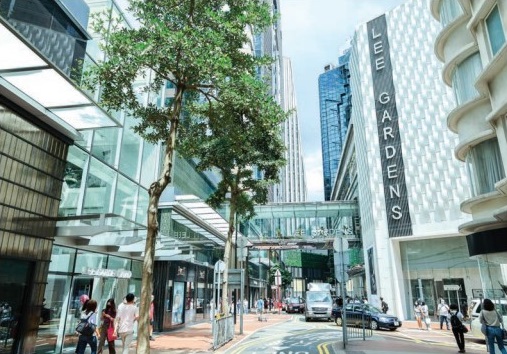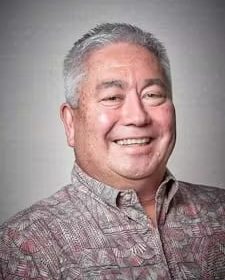Hong Kong Tourism Bringing Aloha to Travel
A spotlight is shining on concerted efforts by Hong Kong Tourism Board public and private sectors in preparation for tourism revival in the post-pandemic city. From aviation and hotels, to retail/food and beverage and attractions, and from the MICE industry to transportation, tourism-related industries in Hong Kong have adapted new safety measure and technologies to keep locals safe and visitors worry-free when international travel returns.
Stronger, Together
There is strength in numbers, as evidenced by the concerted efforts by public and private sector stakeholders in preparing Hong Kong for a new tourism landscape post-pandemic
As the COVID-19 pandemic gained traction worldwide, Hong Kong acted swiftly by imposing strict border controls to mitigate community spreading. In a recent web conference with 1,500 industry stakeholders in attendance, the Hong Kong Tourism Board (HKTB) projected a shift in travelers’ behaviors and preferences in a post-pandemic travel landscape.
Public health conditions of destinations, hygiene standards of transportations, hotels and other tourism facilities, short-haul breaks, and shorter itineraries are expected to take precedence.
HKTB has devised a recovery plan to reinvigorate the city’s tourism, which complements the tourism board’s allocation of HK$400 million (US$51 million) to support promotions by the trade once COVID-19 is over.
Similarly, service providers in other tourism-related assets have also been unanimously stepping up in adapting to a post-pandemic world. These include capitalizing on artificial intelligence and cleaning technologies in supplementing health and sanitation measures, on top of other service touchpoints such as the provision of hand sanitizers and face masks.
In tandem with HKTB’s directives on promoting tourism and revitalize retail, featured hotels in this supplement have indicated their interests in marketing staycations, and retail malls have illustrated their proactiveness in endeavoring a safe experience for shoppers, while devising multiple promotional activities to encourage spending.
Finally, uncover how the government’s allocation of the anti-epidemic fund and organizers’ implementation of revolutionary cleaning technologies in making event venues safer than ever will seek to boost the city’s allure as a coveted MICE destination in Asia.

Aviation Steps Up on COVID-19 Surveillance
Players in the aviation sector are capitalizing on cleaning technology to prepare for air travel rebound
Hong Kong recently announced an upcoming, quarantine-free air travel bubble with Singapore. At Hong Kong International Airport (HKIA), theAirport Authority Hong Kong (AA) has implemented revolutionary cleaning technologies at Hong Kong International Airport (HKIA) – one of Asia’s busiest travel hubs and gateway to the city – in enhancing its existing health and sanitary measures to protect staff and passengers from COVID-19.
Intelligent Sterilization Robots (ISR) are programmed to move with minimum human direction and use a combination of UV light, 360-degree spray nozzles and air filters to sterilize up to 99.99 percent of bacteria within its proximity in 10 minutes.
Departing passengers are required to wear face masks in the departure levels – including SkyPier Sea-To-Air levels, automated people movers and apron passenger vehicles. All persons must undergo temperature checks before being allowed entry into the terminal building, and arriving passengers are required to submit a health declaration form and provide deep throat samples via a remote testing facility upon arriving at HKIA. Also available is a disinfection booth named CLeanTech for staff who perform public health and quarantine duties at the airport. Most airport shops have suspended their businesses since late March and will reopen when passenger traffic begins to recover, with promotional initiatives lined up to stimulate retail spending.

Hotel Technology and Stringent Health Measures Aid Hospitality Recovery
Across Hong Kong, hotels are aggressively ramping up health measures and marketing efforts for a post-pandemic hospitality landscape, where the spotlight is on health and safety for both guests and staff
New models and management concepts will need to be developed in the wake of COVID-19 – which “has created a massive disruption in existing hotel operations and management practices” – in catering to travelers’ needs for a safe, social and hospitable environment and experience, shared Michael Li, executive director, The Federation of Hong Kong Hotel Owners.
Moving forward with part two (Recovery) of Hong Kong Tourism Board’s three-phase plan to reinvigorate tourism – where focus is on encouraging locals to rediscover different neighborhoods and community cultures in order to send a positive message to visitors and restore their confidence in the city – Dorsett and L’hotel hotels have spoken about sharing a common goal of marketing staycations for the domestic market until international borders can reopen.

Retail, F&B Outlets Proactively Roll Out Health Measures
Resilient dining and shopping facilities react promptly to continue providing a safe environment for patrons
Mention Hong Kong and everyone associates it with an array of shopping and dining options. As the pandemic wreaks havoc across the world, F&B establishments and major malls in Hong Kong have come up with proactive measures and creative ideas in facing adversity. Here’s how:
Leading the scene for the recovery of dining establishments in Hong Kong (and around the world by now) is Black Sheep Restaurants with the creation of a COVID-19 Playbook. What is it, you wonder? An ingenious conception, the Playbook is a COVID-19 standard operating procedures manual which the restaurant group had developed in rapid response to the outbreak of the pandemic. It was initially released publicly in a bid to stand united with other Hong Kong restaurateurs as one but has now become a blueprint guide for other restaurateurs around the world viable because of social distancing, i.e. decreased mingling between restaurant managers and guests.
Hysan Development’s Lee Gardens at Causeway Bay have taken further steps in reassuring guests’ peace of minds while shopping at their malls. They use a series of sterilizing and disinfection products to provide an all-round protection against possible virus and bacteria, strategic placement of infrared thermometers to ensure fever-free entry, usage of UV sterilizers on elevator handrails and the installation of automatic hand sanitizing dispensers.
Over 320 automatic hand sanitizer dispensers that have been installed across Sun Hung Kai Properties’ (SHKP) malls, who addressed public concerns on mall hygiene by deploying a team of 300 uniformed Caring Ambassadors to provide additional services for guests. These include opening of doors or pressing lift buttons, and taking body temperature checks across its 30 malls and 27 offices to help fight the pandemic. The implementation of these Caring Ambassadors not only raises public hygiene standards, but also support local employment.

Attractions Adapt to Post-Pandemic Norms
Versatile strategies and tactics revolving around guests’ well-being are in place to welcome visitors again
Beloved Hong Kong attractions provide an update on how they are proactively working with relevant authorities in achieving a fine balance between continuing to provide a fun and memorable experience for domestic and international guests, and new visitation norms in a post-pandemic world.
Over at Lantau Island, Ngong Ping 360 (NP360) reopened in March with precautionary measures such as the companion cabin, which only allows family and friends within the same group to board the same cabin together. It also recommends four to six passengers per cabin, half the normal capacity, in order to ensure sufficient social distancing space inside.
Robust preparations have allowed for homegrown attraction Ocean Park’s reopening in September. A series of strict precautionary measures were put in place to safeguard the health and safety of visitors, staff and animals. They include reducing park-wide capacity (to lower than 50 percent), advanced reservations, body temperature screenings at entry points for all visitors and staff, compulsory donning of face masks in the park, enhanced cleaning and disinfection and regular spraying of a nano photocatalystic coat on its main facilities. Additional hand sanitizer dispensers are installed at the entrances and exits around the park, and animal exhibits and all F&B outlets ensure social distancing of at least 1.5m apart, with no more than eight people allowed to be seated at one table together.
2020 marks the 15th anniversary for Hong Kong Disney Land (HKDL), and plans are underway to unveil The Castle of Magical Dreams and a brand-new nighttime spectacular. In anticipating the throng of crowds returning to the theme park upon its reopening post-pandemic, the attraction has highlighted the importance of implementing crowd control in queues, F&B outlets, hotel, rides and other facilities throughout the park and across the resort.

Public Transport Cleanliness Is Comprehensively Strengthened
HK public transport operators endeavor a safe travelling environment for commuters
Land transport operators have spared no effort in securing a safe and comfortable travelling environment for commuters. MTR Corporation has deployed the Vaporized Hydrogen Peroxide (VHP) Robot which automatically sprays hydrogen peroxide solution that is atomized to a specific concentration that ensures disinfectants penetrate small gaps that are difficult to reach during normal cleaning work. New Lantau Buses (NLB) are served by a team of professional “bus dusters“ carrying out daily cleaning routines whenever the vehicles return to terminals, and cross-border buses to China are cleaned after every round trip. Kwoon Chung Bus Holdings Limited (KCHB) shared that the latest deep cleaning services involve the use of Germagic – an innovative product that protects surfaces against SARS-CoV-2 and over 100 viruses for 90 days.

MICE Industry
Hong Kong to Uphold Its Allure as Asia’s MICE Capital, Government backed anti-epidemic funding, HKCEC’s advancement project and venue health and safety measures are in the line-up to retain the city’s competitiveness as a business events destination
The norms on the organization and holding of business events are expected to be revised in the wake of COVID-19, as planners put higher weight on public health and safety measures, as well as the extent of a venue’s readiness in reacting to contingencies and operation disruption in moving forward with venue selection.
Hong Kong Convention and Exhibition Centre (HKCEC) hosted the city’s first exhibition since the COVID-19 outbreak – the 98th Hong Kong Wedding Fair from May 22-24. HKCEC has also embarked on a HK$1 billion (US$129 million) Five-Year Advancement project to demonstrate its confidence on the long-term growth of the industry and business at the HKCEC. At present time, stages one and two involving a majority of the interiors, ancillary rooms and 5G infrastructure are completed, with full completion expected in Q1 2024.
As part of the anti-epidemic fund by the HKSAR government, HK$1.02 billion (US$131 million) has been apportioned to re-ignite the city’s convention and exhibition (C&E) industry. Under this one year scheme, all organizers of exhibitions and international conventions/conferences (i.e. with over 400 participants, of which 50 percent are nonlocal participants) at HKCEC and AWE can expect to receive full subsidies for venue rental, which they are strongly encouraged to share with their event participants.




